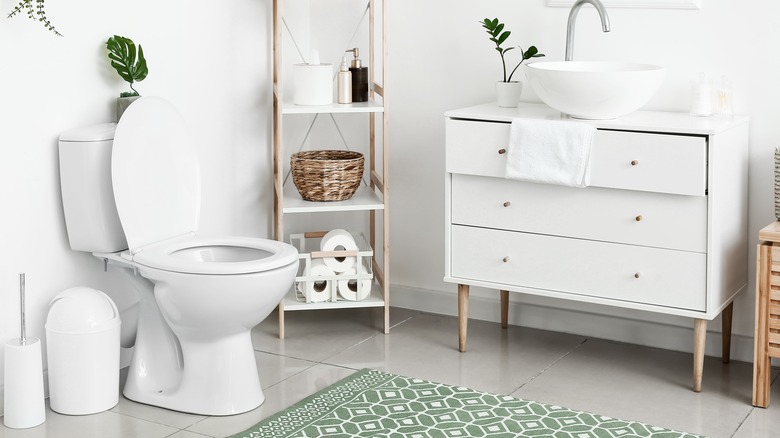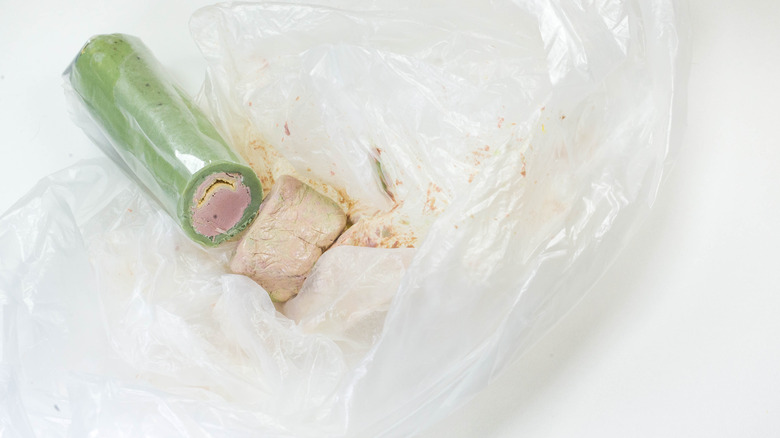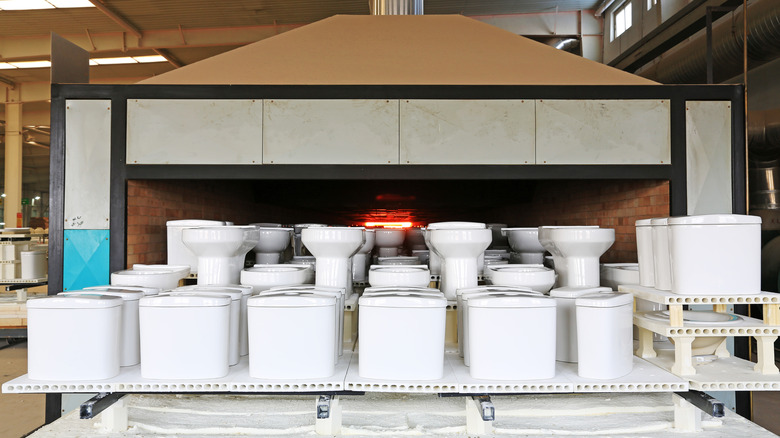How To Repair A Chipped Toilet Bowl
We may receive a commission on purchases made from links.
Your toilet bowl has a chip. First things first — just because there's a minor, unsightly blemish doesn't mean you'll have to buy a whole new loo. Luckily, a chipped toilet is an easy fix that only requires a trip to your local home improvement store for an appropriate epoxy or resin adhesive. While both applications are relatively simple, the resin can be more labor-intensive, as it involves mixing a few ingredients. That being said, the resin is also considered more durable than epoxy. Either way, this is a DIY job that you won't want to rush. Both methods can take a day or longer to restore your toilet to its former glory.
Before you start mulling over the idea of replacing your toilet, just know that fixing a small ding isn't rocket science, and it won't always require the aid of a professional. What it does require is being attentive and closely following instructions.
Epoxy putty is the most straightforward method
Always prep the area before starting your toilet "skin grafting" project. (Never, ever skip this most crucial step.) If the chip is in an area exposed to moisture, shut off the water and flush it so the tank and bowl are both empty. Keep in mind that if the chip is on the inside of the bowl, you won't be able to use it until this project is complete. So if this happens to be the only chair in the house, you'll want to take that into consideration.
AquaMend is a specialty epoxy putty that can be smoothed over the chipped area. After its 24-hour curing time, you'll want to help blend it with the surface using fine grit sandpaper. Finish the process by applying a coat of appliance-specific touch up paint, which seals the epoxy and creates a waterproof barrier. These come in spray versions and small containers, both of which can be found at your local hardware or plumbing store. When the paint is dry, you can turn the water back on and put your toilet back in commission.
Not all adhesives are created equal
While it might not seem like a big deal, knowing what your toilet is made of is essential; not all adhesives are created equal when fixing a chip. Toilets are typically made from either ceramic, which is more prone to chipping and cracking, or porcelain, which is more durable and watertight than its counterpart. The main difference is that porcelain is hit with more heat during the final firing stage. This creates a surface that is smooth, glossy, and much more difficult to damage.
When working with porcelain, while you can still use universal chip putty or resin paint, it's best to err on the side of caution and look for a chip filler that is designed to fuse to the material, like this one from Amazon. If you have any doubts, remember that calling in professionals can save you a lot of problems in the future, even if it's more expensive than a DIY fix.


